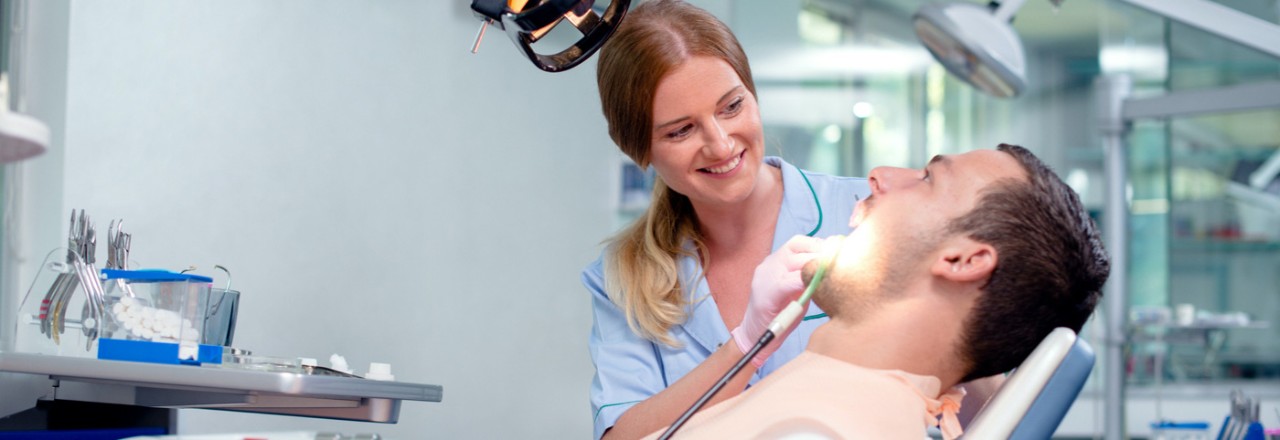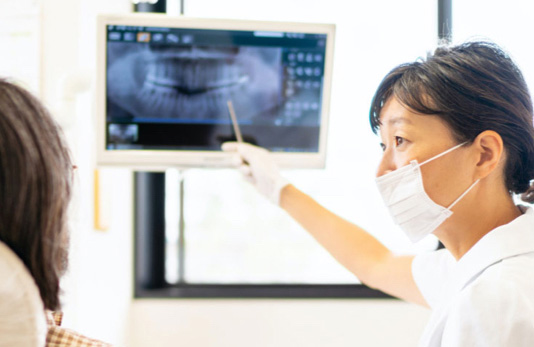The hows and whys of a simple tooth extraction

Being told by your dentist that you need a tooth pulled may shock and alarm you. Learning the reasons for this recommendation and understanding what to expect can help ease your worries.
Why would I need a tooth pulled?
There are several reasons why you might need an extraction:
- You have too many teeth. This condition, called hyperdontia, may mean you need one or more teeth pulled to prevent biting and chewing problems.
- You’re getting braces. If you’re a candidate for braces, your dentist may want to remove one or more teeth to make room in your mouth for your teeth to move.
- You have a tooth infection. You may have an infection in the tooth pulp, which is the area inside the tooth’s root. When root canal treatment isn’t an option, pulling the tooth may be the only option to kill the infection and stop the pain.
- You have a loose tooth. If your tooth is loose because of gum disease, then it might be pulled to stop the spread of infection and help save the bone left in the jaw.
- You’re ill. If you’re fighting cancer or have a compromised immune system, you may need to have decayed teeth pulled to prevent continued spread of infection.
What happens if I don’t have a tooth pulled?
An untreated tooth infection won’t heal and will likely worsen without proper medical care. Ignoring an infected tooth can lead to the bone and gum weakening over time, which makes the damage much harder to repair.
You’re also asking for more pain and discomfort, and the infection will likely spread to other teeth. You also put yourself at risk for sepsis, which is deadly.
If your mouth is crowded and you don’t pull some teeth, your overbite or underbite can worsen. Your other teeth might move to “fit,” which can lead to additional problems:
- Pain while biting or chewing
- Impacted or infected teeth
- Bad jaw alignment
How is a tooth pulled?
First, relax. You shouldn’t feel pain because your dentist will numb the tooth, gums and bone tissue with a local anesthetic.
When the area is numb, your dentist will use a device called an “elevator,” placed between the tooth and gums, to create space. Your dentist will then use special forceps to pull out the tooth. The area will be thoroughly cleaned to prevent infection and prepped for recovery. The procedure is usually quick. Waiting for the local anesthesia to take effect may take longer than the actual extraction.
What happens after my tooth is pulled?
After an extraction, expect some bleeding — it’s normal. A clot will develop to help slow and eventually stop the bleeding. You want to be sure the clot stays in place, so follow your dentist’s directions for the next 48 hours.
You should:
- Bite on a gauze pad to stop any bleeding
- Use an ice pack (or a small bag of frozen veggies) and ibuprofen to stop any swelling (Make sure your dentist knows ahead of time if you are allergic to any medication.)
- Brush and floss your other teeth as usual — just be careful and take your time, particularly in the area around the extraction
- Rinse your mouth with warm, salty water 24 hours after the procedure or when your dentist says it’s safe
You shouldn’t:
- Use a straw or rinse your mouth vigorously
- Drink alcohol or smoke
- Brush or floss the empty socket
- Exercise — this increases blood flow in the body, which will aggravate the socket
After a few weeks the socket should close, but this depends on many factors, including the number of teeth removed and their size. The smaller the tooth, the faster the healing because there are fewer roots involved. Be patient and follow your dentist’s instructions. If you suddenly start bleeding or feeling pain, call your dentist immediately.
Can I replace my missing tooth?
When you and your dentist discuss the treatment plan for tooth removal, you’ll also cover the options for replacing it.
One thing to remember: Viable options are dependent on your overall health. Make sure your dentist is aware of any prior or current medical issues. After you choose your replacement option, you’ll want to ask your dentist to submit a pre-treatment estimate to us, so you’ll know approximately what your out-of-pocket costs will be.
What are my options for a tooth replacement?
You have several options to choose from, depending on your situation and the health of your mouth:
An implant
- What it is: A dental implant is an artificial replacement for a missing natural tooth or root. It can be used in both the upper and lower jaw and is known for its stability and comfort.
- Who could use it: Implants are a good option for someone in good general health and has a healthy jaw, which is needed to support the implant.
A bridge
- What it is: A bridge consists of an artificial tooth with crowns placed on existing teeth on either side.
- Who could use it: Getting a bridge may be a good option if your tooth has been missing for a long time. Because gum and bone have already receded, your jaw may not be able to properly secure an implant.
Removable partial denture
What is it: A partial denture is a set of replacement teeth attached to a base that matches the skin color of your gums. It’s held in place with an adjustable clasp that attaches to your teeth and can be removed at night.
Who could use it: The partial denture is a good option for anyone who has lost multiple teeth because it can help support the facial muscles and make eating much more comfortable.
Remember: Follow your dentist’s post-surgical instructions, call if anything seems to go wrong after your surgery, and keep the rest of your mouth healthy by brushing and flossing every day.
Last updated February 7, 2022
Related articles:
The oral health information on this website is intended for educational purposes only. Always consult a licensed dentist or other qualified health care professional for any questions concerning your oral health.


